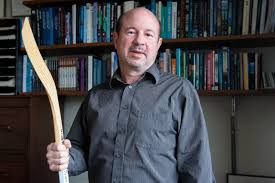Science Mag By Tim Wogan | May 25, 2016

Federico Bianchi (pictured) and colleagues took the CLOUD instrumentation into the Alps to show sulfur dioxide wasn’t needed to make aerosols.
Clouds need to condense around small particles called aerosols to form, and human aerosol pollution—primarily in the form of sulfuric acid—has made for cloudier skies. That’s why scientists have generally assumed Earth’s ancient skies were much sunnier than they are now. But today, three new studies show how naturally emitted gases from trees can also form the seed particles for clouds. The results not only point to a cloudier past, but they also indicate a potentially cooler future: If Earth’s climate is less sensitive to rising carbon dioxide (CO2) levels, as the study suggests, future temperatures may not rise as quickly as predicted.
“It’s been long thought that sulfuric acid is really the key player [in cloud formation],” says atmospheric chemist Chris Cappa of the University of California, Davis, who was not involved in the research. The studies “show pretty convincingly that we don’t need sulfuric acid around to allow new particles to grow.”
Scientists, who agree that CO2 and other gases from human activities are warming Earth, disagree widely about how sensitive the planet’s climate is to these changes. One contentious point is the effect of sulfur dioxide, a pollutant that has risen nearly sevenfold in the modern era. Sulfur dioxide reacts with oxygen and water to form sulfuric acid, which helps form the aerosol particles that seed cloud droplets. Since clouds reflect sunlight back into space, any extra clouds could have offset a portion of greenhouse gas warming.
The new research, however, suggests that the past may have been cloudier than scientists realized. To simulate ancient atmospheric conditions, one research group used CLOUD (Cosmics Leaving OUtdoor Droplets), a controlled chamber at CERN, Europe’s particle physics facility near Geneva, Switzerland. Nearly as big as a bus, the chamber was filled with synthetically produced air, allowing precisely controlled chemical conditions. Jasper Kirkby, a CERN particle physicist, and his colleagues introduced a mixture of natural oxidants present in the air and an organic hydrocarbon released by coniferous plants. The hydrocarbon was rapidly oxidized. The only other ingredient allowed in the chamber was cosmic rays, high energy radiation from outer space, which made the molecules clump together into aerosols. Sulfuric acid was not required. In fact, even when the researchers introduced low concentrations of sulfuric acid to the chamber such as might be found in unpolluted air, the aerosol formation rate was unaffected. In a second CLOUD experiment published simultaneously in Nature, researchers showed these same oxidized molecules could rapidly grow the particles to sizes big enough to seed cloud droplets.
In search of a pristine atmospheric environment, a second group of researchers made atmospheric measurements of aerosol formation at the Jungfraujoch high altitude research station, 3500 meters up in the Swiss Alps to confirm that this process really occurs in nature. Over the course of a year, they measured the changing concentrations of sulfuric acid and organic molecules in the air. They found more aerosols formed with more organic molecules around, and—crucially—observed formation of organic particles without sulfuric acid. They used exactly the same instruments as at CLOUD to analyze the aerosols: “The clusters were formed mainly by organics,” says atmospheric chemist Federico Bianchi of the Paul Scherrer Institute in Villigen, Switzerland, who led the Jungfraujoch research published today in Science.
All the researchers stress sulfuric acid is still a major contributor to cloud formation on Earth today. “Today the purely plant-based pathway is much less important than it was preindustrially,” Kirkby explains. Crucially, however, the result means climate modelers can’t assume that the ancient past was much less cloudy simply because there was less sulfur dioxide. If ancient cloud cover was closer to today’s levels, the increase in the cloud-cooling effect due to human pollution could also be smaller—which means that Earth was not warming up so much in response to increased greenhouse gases alone. In other words, Earth is less sensitive to greenhouse gases than previously thought, and it may warm up less in response to future carbon emissions, says Urs Baltensperger of the Paul Scherrer Institute, who was an author on all three papers. He says that the current best estimates of future temperature rises are still feasible, but “the highest values become improbable.” The researchers are currently working toward more precise estimates of how the newly discovered process affects predictions of the Earth’s future climate.



